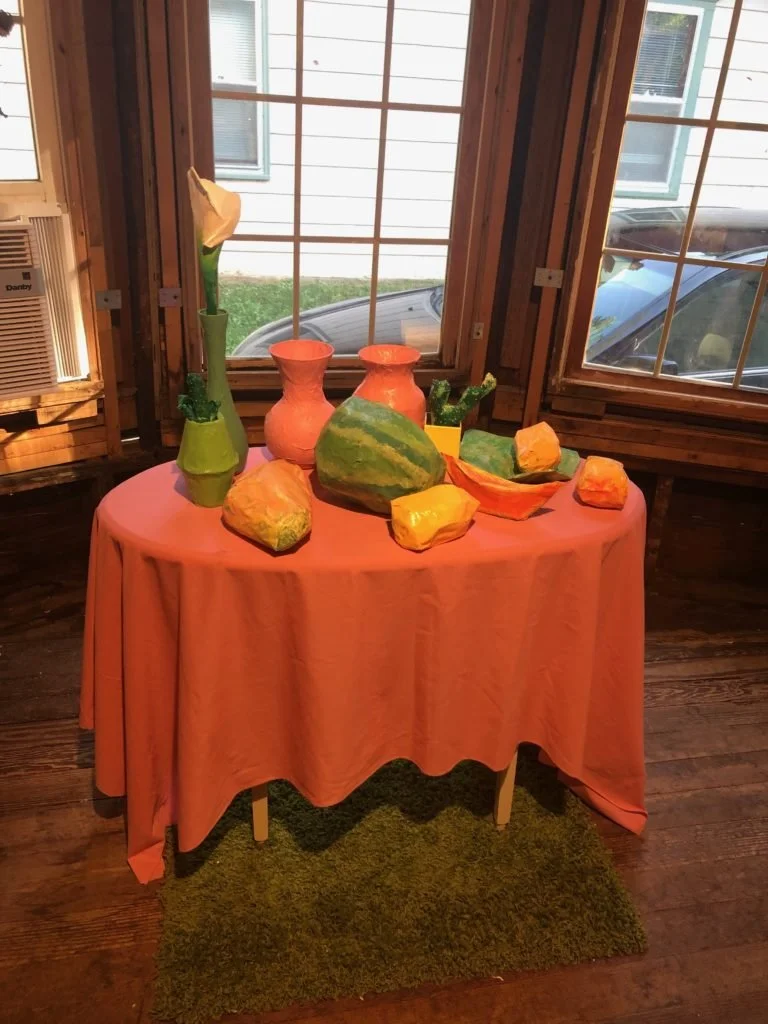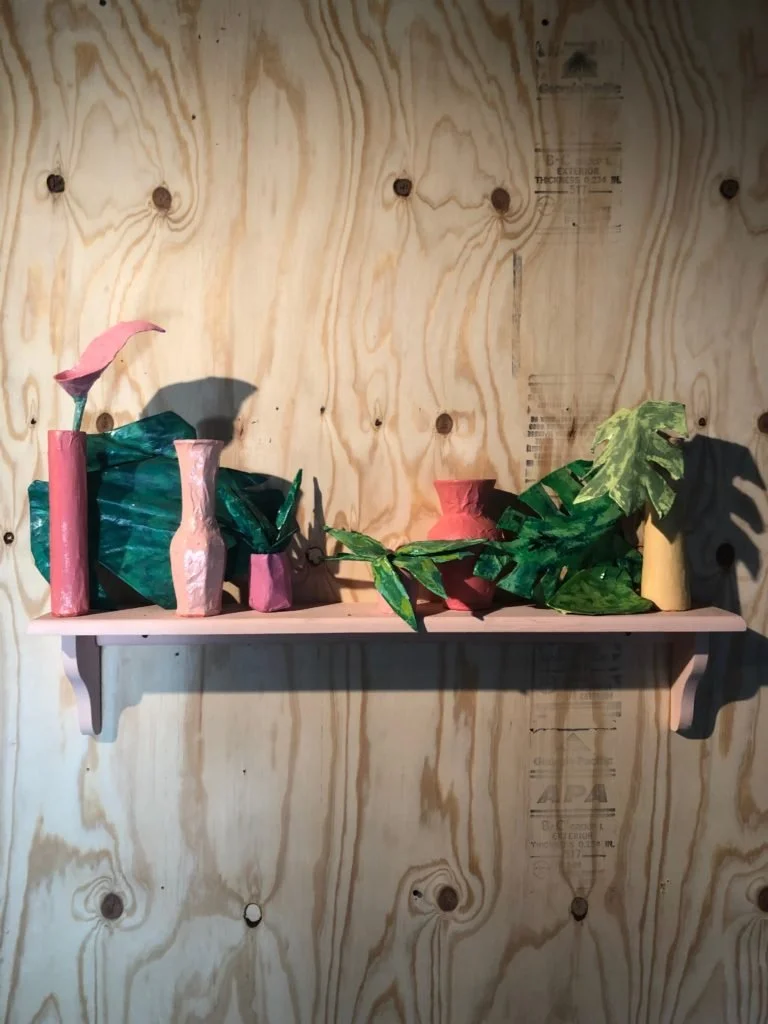Same, Pero Diferente at Open House
“Except for a few medallions stamped with the likeness of our ancestors, our child-memory
contains only worn coins. It is on the plane of the daydream and not on that of facts that
childhood remains alive and poetically useful within us.”
–Gaston Bachelard, The Poetics of Space
In this story of architecture and the lived experience, Bachelard offers the metaphor of the house
as a site of dwelling for the soul. Memories of the childhood home evoke a deep and nostalgic
embodiment of our beginnings as humans, the concept most essential to being.
Image by Brandon Forrest Frederick.
The home can be imbued with the childhood imprint of another, simply by virtue of placing
objects of anyone’s memory within it. Therein always exists a trigger In Same, Pero
Diferente, artists Rebeka Pech Moguel and Aquetzali “Kiki” Serna offer an insider’s view of
growing up Mexican. The show’s title (Same, But Different) riffs on the similarities and
differences in the lives of the artists, one a Mexican immigrant and one the U.S. born child of
Mexican immigrants. The rough, gutted experimental art space that is Kansas City’s Open
House becomes a stage for a performance of intimacy and familiarity, a surrogate for the
artists’ home of origin.
Assemblages 1, 2019, image by the author.
Assemblages 2, 2019, image by the author.
Image by the author.
Forming a backdrop for and providing an interesting contrast to the 3D objects are the flat
textile works by Rebeka Pech Moguel. Draped on the mostly unfinished walls in the main
areas of the house, these large works interact with Serna’s to complete the simulation of
domestic space. Affixed to yellow sheets of fabric are flat organic forms; mango, papaya,
leaves of monstera and calla lily. Placing them in the context of an empty house allows the
works to evoke the lived experience of two families in a way that would not be possible in a
traditional white cube gallery.
Image by Brandon Forrest Frederick.
In the kitchen area sits another table, also laid with a pink cloth. For the show’s opening
reception, there was a birthday cake with the inscription Mordida along with an album of
childhood birthday photos of the artists (Mordida, 2019). Prior to the opening of the
exhibition, Pech-Moguel and Serna participated in the long standing Mexican birthday
tradition of La Mordida where one’s face is ceremonially smashed into the cake while other
guests chant “mordida! mordida!” which, loosely translated, means ‘take a bite!’ Though this
was acted out as a private moment between the two artists, it was photographed by Open
House co-director Brandon Forrest Frederick and shared on social media as a performative
event. The remains of the cake were left on the table for the opening.
Image by Brandon Forrest Frederick.
Image by the author.
The album on the table next to the cake illustrates a ritual that transcends cultures, the
birthday cake photo. Going through their childhood birthday pictures, the artists found striking
similarities in pose, clothing, and content, so much so that they decided to display them in
pairs to illustrate the parallels in their lives. This theme is carried over to a room adjacent to
the kitchen area, where two mixed media self-portraits, based on photos of each artist on her
seventh birthday, adorn the wall (Siete, 2019). Each features a seated girl, eyes closed, in
front of a birthday cake covered in candy and birthday candles, in a sort of child-like style that
brings to mind the ubiquitous refrigerator art found in family homes.
Serna has remarked that she dwells continually on the spaces of her childhood. In Poetics
Bachelard contends that to inhabit the home of our childhood in imagination means more
than just having a memory; the daydream of that space allows us to live in that home that is
no more, in the way we used to dream in it. These values remain long after we leave. In this
context Serna’s and Pech Moguel’s work can be read as seeking a return to an emotionally
safe space, the idea of a refuge from a hostile environment.
Image by Brandon Forrest Frederick.
In contrast to some of the other shows recently that have explored themes of cultural identity
by Latinx artists, this show explores a more universal theme, of childhood memory and our
origins. This is key to our perception of difference—these stories must be told, again and
again, until we realize that all of our stories are more the same than different. It is when we
can recognize our story in another’s that we build meaningful connections.
Think of that moment when you see yourself in another person, when you say “you too?”
That moment when you realize you’re not alone and someone else sees you. Then, imagine
the profound significance of those moments for another, labeled as an outsider, feeling
‘othered’, always diferente.
Bachelard, Gaston. The Poetics of Space. trans. (Boston: Beacon Press, 1969)
Rebeka Pech Moguel and Aquetzali “Kiki” Serna at the closing reception, image by the author.










